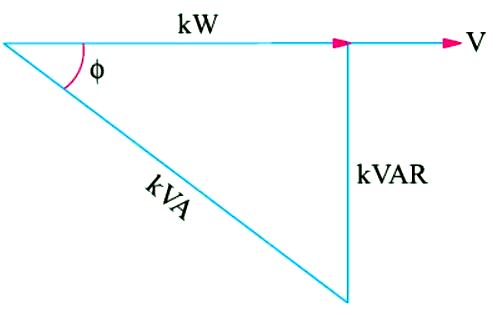Active and Reactive Components of Circuit Current
In this article we will discuss about the Active and Reactive Components of Circuit Current. Active component is that which is in phase with the applied voltage V i.e. I cos φ. It is also known as ‘wattful’ component.
Reactive component is that which in quadrature with V i.e. I sin φ. It is also known as ‘wattless’ or ‘idle’ component. It should be noted that the product of volts and amperes in an a.c. circuit gives voltamperes (VA). Out of this, the actual power is VA cos φ = W and reactive power is VA sin φ. Expressing the values in kVA, we find that it has two rectangular components :

(i) Active component which is obtained by multiplying kVA by cos φ and this gives power in kW.
(ii) The reactive component known as reactive kVA and is obtained by multiplying kVA by sin φ. It is written as kVAR (kilovar). The following relations can be easily deduced.
![]()
kW = kVA cos φ and kVAR = kVA sin φ
These relationships can be easily understood by referring to the kVA triangle of Figure (A) where it should be noted that lagging kVAR has been taken as negative.
AdBlock-2

Active, Reactive and Apparent Power
Let a series R-L circuit draw a current of I when an alternating voltage of r.m.s. value V is applied to it. Suppose that current lags behind the applied voltage by φ.
The three powers drawn by the circuit are as under :
(i) apparent power (S)
It is given by the product of r.m.s. values of applied voltage and circuit current.
∴ S = VI = (IZ) . I = I2Z volt-amperes (VA)
(ii) active power (P or W)
It is the power which is actually dissipated in the circuit
resistance. P = I2R = VI cos φ watts
(iii) reactive power (Q)
It is the power developed in the inductive reactance of the circuit. Q = I2XL = I2.Zsin φ = I.(IZ).sin φ = VI sin φ volt-amperes-reactive (VAR) These three powers are shown in the power triangle of Figure (B) from where it can be seen that
![]()
Read article –r.m.s. value
Visit NCERTplanet.com for NCERT solutions and Textbook downloads




